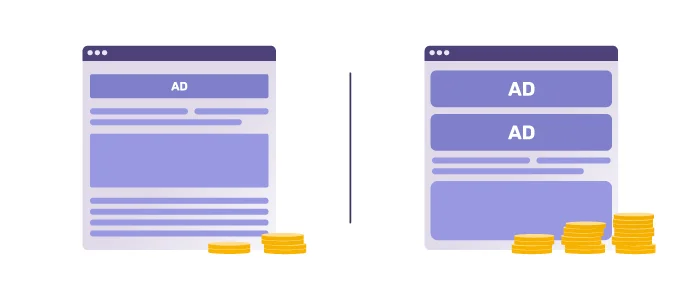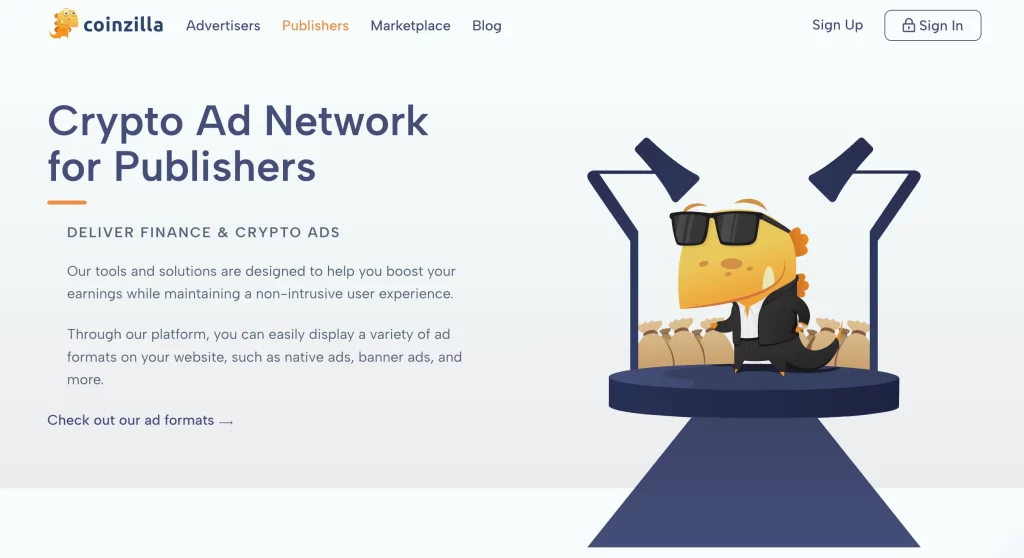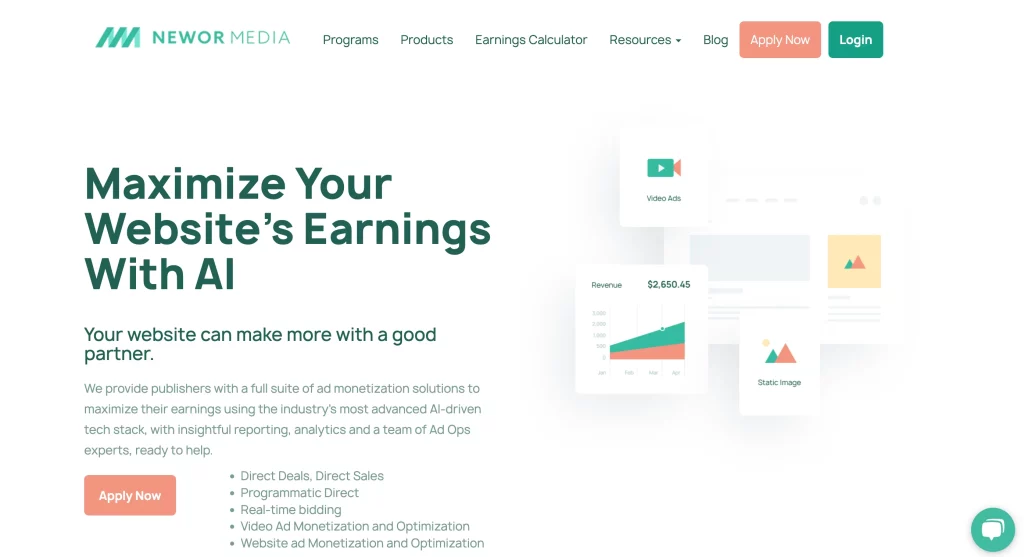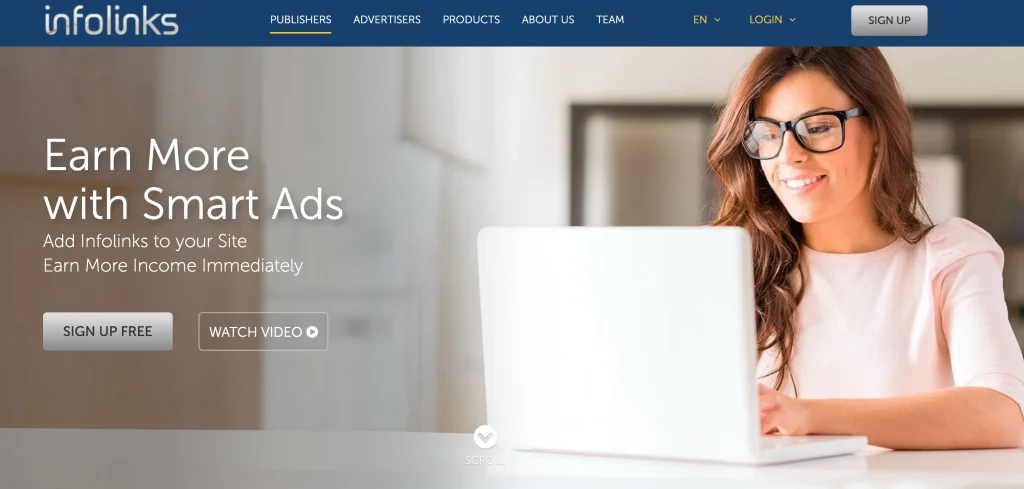Best Ad Networks for Publishers in 2025: 5 Community Picks
Making money from a website should be easy: get traffic, place ads, and watch the revenue roll in. But for most publishers, it’s not that simple. Poor ad placements, low CPMs, and unhelpful networks often lead to low earnings.
29% of U.S. digital publishers face significant challenges, such as ads showing up next to inappropriate content and issues targeting the right audience.
But here’s the good news: You can make a real difference by picking the right ad network for your site’s size, niche, and audience. In this article, we’ll show you the best ad networks for publishers based on real results and insights from the community.
Table of Contents
Choosing the Right Ad Network: Key Criteria for Publishers
Choosing the best ad network for your site isn’t just about placing ads and hoping for the best. You need to consider several factors to maximize your revenue potential. Here are the key criteria to help you select the right one:
1. Ad quality & relevance
The ads on your website can make or break the user experience. If ads are irrelevant or spammy, visitors might leave your site, losing traffic and revenue. That’s why choosing an ad network that delivers high-quality, relevant ads that make sense for your audience is essential.
Look for networks that use smart targeting to match ads with your content and users’ interests. When ads are helpful and non-intrusive, everyone wins: your visitors stay happy, and you earn more.
2. Transparency and support
The right ad networks give you clear reports that show how your ads are performing, how much money you’re making, and how users interact with your site. If you run into problems, they offer quick and helpful support to get you back on track.
3. Reputation & community feedback
Before choosing an ad network, research what other publishers are say about it. Honest feedback from the community can give you a clear picture of how reliable a network is, how much you can realistically earn, and how good their support team is.
Check out reviews on forums, blogs, or even social media. These often reveal honest experiences. Read case studies or success stories to see how other sites have grown using that network for even more insight.
CPC vs CPM vs CPA: What’s Best for You?
How you get paid depends on how your visitors interact with the ads on your site. Some models pay you for clicks, others for views, and some only when users take a specific action. To choose the best one for your site, you need to understand how each model works and which fits your audience’s behavior.
Let’s break down the three most common options: CPC, CPM, and CPA.
| Model | How You Earn | Best For |
|---|---|---|
| Cost per Click (CPC) | You get paid every time a visitor clicks on an ad. | High-traffic sites with lower user engagement |
| Cost per Mille (CPM) | You earn money every time an ad is shown 1,000 times on your site, regardless of whether users click on it. | Sites with a lot of visitors but low click-through rates |
| Cost per Acquisition (CPA) | You earn money every time an ad is shown 1,000 times on your site, regardless of whether users click it. | Sites with a highly engaged and targeted audience |
Small vs. Large Publishers: Monetization Needs

Different publishers have different needs when it comes to choosing an ad network. A strategy that works for a high-traffic news site might not be the best fit for a small blog or niche website.
Small publishers often need:
| Easy Approval | Some ad networks make it hard for new or small websites to join. Choose one that’s beginner-friendly and doesn’t require huge traffic to get started. |
| Low Payment Thresholds | It’s better to work with networks that let you cash out smaller amounts more often, especially when you’re just starting. |
| Simple, All-in-One Tools | To save time and effort, look for ad networks that offer automatic ad placement, easy setup, and user-friendly dashboards. |
Large publishers tend to focus on:
| Maximizing Revenue | Large publishers receive a lot of traffic, so their main goal is to earn as much money as possible from every visitor. To increase their earnings, they use advanced methods such as header bidding, customized ad placements, and direct deals with advertisers. |
| Customization | The best ad networks for large publishers let you customize how ads look. They offer video ads, native ads that blend in with your content, and tools to make ads match your site’s design and style. |
| Dedicated Account Managers | Websites with high traffic often have a support team or an account manager. These experts help set up the best ad settings, fix problems quickly, and suggest ways to earn more. |
Mobile Traffic Considerations
As of January 2025, mobile phones (not including tablets) make up more than 62% of all web traffic worldwide. That means optimizing your ads for mobile is more important than ever. Your ad network could miss out on serious revenue if it isn’t mobile-friendly.
Here’s what to look for:
1. Responsive ad formats
Leading ad networks offer ads that automatically adjust to any screen size (phone, tablet, or desktop). This ensures your site layout stays clean and user-friendly, no matter how people access it.
2. Fast-loading ads
Mobile users expect speed. If your ads slow down your site, users bounce. The best ad networks use lightweight, mobile-optimized formats that load quickly and don’t interrupt the user experience.
3. Mobile-optimized placements
Specific ad placements work well on mobile, such as sticky banners or in-feed ads that blend naturally with your content. A good ad network knows how to position these ads for maximum visibility and engagement.
Top 5 Best Ad Networks for Publishers in 2025
1. Coinzilla: Best for Crypto & Finance Websites

Coinzilla is one of the best ad networks to consider in 2025 if your website targets a crypto-savvy or finance-focused audience. And it’s easy to see why.
Unlike general ad platforms, Coinzilla is built exclusively for the crypto, blockchain, and fintech space. This laser focus gives publishers a significant advantage: instead of competing for leftover ad inventory from unrelated industries, you get premium access to high-paying ads from vetted crypto and finance brands.
Key Features & Benefits
- Crypto-focused advertisers only: From DeFi projects to blockchain apps and trading platforms, Coinzilla connects you directly with crypto brands looking to reach your specific audience.
- Multiple ad formats: You can choose from classic banners, native ads, pop-unders, header banners, and sticky banners. All ads are reviewed to ensure they’re safe, clean, and high-quality.
- Multiple payout options: Fiat and crypto payments in BTC, ETH, USDT (ERC20), or Bank Wire (SEPA/SWIFT);
- Dedicated support: You’ll get a personal account manager to help with setup, ad placement, and optimization tips.
| Pros | Cons |
|---|---|
| High-paying, crypto-focused ads | Only suitable for crypto/finance publishers. |
| Multiple ad formats available | Requires decent traffic for higher earnings. |
| Flexible payout options (fiat & crypto) | Earnings can fluctuate with the crypto market. |
Based on feedback from industry peers, Coinzilla stands out for its reliable payments, high eCPMs, and responsive support. Many crypto and finance publishers highlight their transparency and niche-specific focus as significant advantages.
We’ve tried several similar platforms, but for us, none have delivered results like Coinzilla. From the start, the performance, campaign management, and support have been outstanding. We’re excited to continue our partnership and look forward to further success with Coinzilla – Daniel @ Jackbit.com
If your website focuses on crypto or finance content, working with an ad network specialized in this niche can improve the alignment between your audience and the ads you display.
2. Google AdSense: Best for Display Advertising

Google AdSense is one of the easiest ways for website owners to make money by showing ads. Millions of publishers worldwide trust it because it’s simple and works for almost any website. With AdSense, you place ads on your site that automatically match your content and visitors’ interests. This means you can earn passive income without doing much extra work.
Key Features & Benefits
- Automatic ad matching: AdSense automatically shows ads that fit your content and visitors’ interests. This helps you get more clicks and earn more money.
- Easy setup: Adding AdSense to your site is very simple. You just copy and paste a small piece of code, and no technical skills are required.
- Huge selection of advertisers: Because AdSense is connected to Google’s massive ad network, there are always lots of ads available, no matter what your website is about.
- Smart optimization: AdSense uses Google’s smart technology (AI) to find your ads’ best places and formats, helping you make more money without extra effort.
- Different ad formats: You can choose from display ads, in-feed ads, in-article ads, matched content, and auto ads that adjust automatically to your site’s layout.
| Pros | Cons |
|---|---|
| Easy to use, even for beginners | $100 minimum payout can be high for small publishers. |
| Excellent reporting and analytics dashboard | Strict rules and policies can get you banned if you’re not careful. |
| Smart, automatic optimization features | Revenue can vary widely depending on niche and traffic quality. |
| Great reporting and analytics dashboard | Some publishers feel that revenue shares are lower compared to private deals. |
If you want a straightforward, reliable way to monetize your website, Google AdSense is a great place to start. It’s easy to use, doesn’t require much maintenance, and offers steady payouts. Remember that to maximize earnings, it might take time to build up traffic and optimize your ad placements.
3. Newor Media: Best for Header Bidding

Newor Media is a strong choice for publishers who want to maximize ad revenue through header bidding. It’s a smart way to get multiple advertisers to bid on your ad space simultaneously.
Key Features & Benefits
- Header bidding technology: Newor Media helps you earn more by running real-time auctions between different ad networks. This way, you get the best possible price for every ad impression.
- Easy setup: Their team handles everything from installing the header bidding code to optimizing your ad placements, so you don’t have to worry about the technical side.
- Premium ad demand: It connects your site with top advertisers, giving you access to better ads that pay higher rates.
- Account management: You’ll have a dedicated account manager who will help you with setup, solve any issues, and suggest ways to boost your earnings.
- Fast payments: They pay reliably every 30 days (net 30) via ACH or PayPal, so you always know when your money is coming.
| Pros | Cons |
|---|---|
| Higher CPMs with header bidding | Requires at least 30,000 pageviews per month. |
| Hands-off setup and management | Slightly longer setup time compared to basic networks. |
| Premium advertisers mean better ad quality | Not suited for brand-new or very small sites. |
Newor Media is a perfect fit for growing mid-size to large publishers who want to increase their ad revenue without manually managing everything. If your site gets decent traffic and you’re ready to take monetization to the next level, Newor Media’s smart bidding system can help you earn more from every visitor.
4. Infolinks: Best for In-line Text

Infolinks is one of the best ad networks for monetizing content without cluttering your website with banner ads. It works well with many types of content, especially blog posts, product reviews, tutorials, and educational articles. Publishers also get access to detailed analytics and easy-to-use tools that help optimize ad performance.
Key Features & Benefits
- In-text advertising: Infolinks highlight keywords inside your articles and turn them into small, relevant ad links.
- Non-intrusive formats: In addition to in-text ads, they offer banner ads, video ads, and native ads that blend smoothly into your site’s design.
- Quick setup: Integration is simple. Just add a small code snippet, and the ads automatically start appearing.
- Work with any size site: No minimum traffic requirements exist, making it perfect for small blogs and growing websites.
- Flexible payout: You can get paid via PayPal, Payoneer, eCheck, ACH, and more.
| Pros | Cons |
|---|---|
| No minimum traffic needed | Earnings may be lower if your site isn’t a good content fit. |
| Easy to install and customize | Ads might feel intrusive if not placed carefully. |
| Multiple ad types beyond in-text ads | Payout thresholds can vary depending on the payment method. |
Infolinks is great for small—to medium-sized publishers who want a low-effort, flexible way to earn extra money from their existing content. It works exceptionally well for websites with lots of written content where users naturally engage with text.
5. Propeller Ads: Best for Performance & Pop Ads

Propeller Ads is a strong option for publishers focusing on high-performance ad formats, especially popunders and push notifications.
Popunders open behind the main browser window, making them less disruptive while still being highly visible. Push notifications allow you to reach users even after they’ve left your website, offering long-term engagement and recurring revenue potential.
These formats are ideal for websites with high traffic volumes and an audience responsive to bold, direct advertising.
Key Features & Benefits
- Multiple high-earning ad formats: Includes popunders, push notifications, interstitials, and native banners.
- Full traffic monetization: You can monetize 100% of your traffic, including international and mobile visitors.
- Fast and easy approval: You can sign up and earn within minutes without strict entry requirements
- Real-time reporting: Their dashboard shows live performance data so you can track your earnings easily
- Flexible payout options: Get paid weekly via PayPal, Payoneer, Skrill, wire transfer, and more.
| Pros | Cons |
|---|---|
| Very fast approval process | Ad quality can vary depending on the traffic source. |
| Monetizes all types of traffic | Not ideal for premium, brand-focused websites. |
| Strong mobile ad formats | Speedy approval process |
Propeller Ads is an excellent option for publishers in commercial niches such as entertainment, MP3, and streaming, where users are more likely to engage with dynamic ad formats that are impactful yet not disruptive.
FAQ
An ad network connects advertisers (who want to promote their products) with publishers (website owners who display ads). The network acts as a middleman, helping advertisers reach their audience and allowing publishers to earn money from their traffic.
A publisher’s role in an ad network is to display ads on their site. They earn revenue based on user interactions, such as impressions, clicks, or purchases. Simply put, publishers offer ad space and get paid for showing ads from the network’s advertisers.
An ad network connects advertisers with publishers who want to display ads. An ad publisher is the website owner or platform displaying ads in exchange for revenue.
Publishers use ad servers to manage and deliver ads, optimize placements, and track performance. They help ensure ads load quickly and efficiently and monitor revenue from user interactions.
Publishers use ad networks to monetize their websites more easily. They get access to high-quality ads that match their content, helping boost revenue and improve the user experience without dealing directly with advertisers.
Final Thoughts
Finding the right monetization partner can completely transform your website’s earnings. Whether you run a niche blog or manage a large media site, choosing from the best ad networks for publishers ensures you get high-quality ads, better payouts, and support tailored to your growth.
There’s no one-size-fits-all solution, but you can unlock real revenue potential by testing and aligning with the right network for your audience and content.